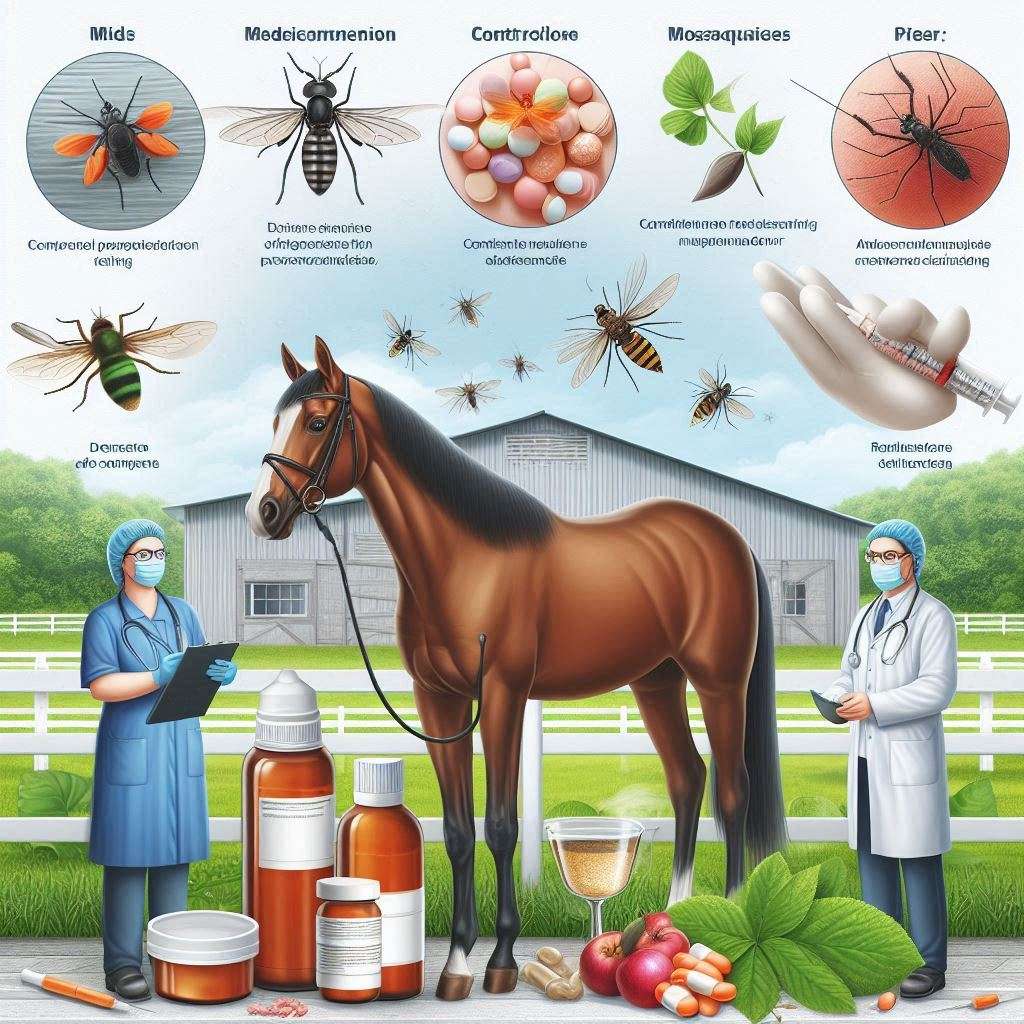Overview
African Horse Sickness (AHS) is a highly fatal viral disease affecting equids, including horses, donkeys, and zebras. The disease is caused by the African Horse Sickness Virus (AHSV), a member of the Orbivirus genus within the Reoviridae family. It primarily circulates in sub-Saharan Africa and is transmitted by Culicoides biting midges. African horse sickness (AHS) is notable for its severe impact on horses, which often exhibit dramatic clinical signs and high mortality rates. Zebras, though infected, typically remain asymptomatic and act as reservoirs for the virus. African horse sickness (AHS) poses a significant global threat due to its potential for rapid spread and devastating effects on horse populations.

Causes and Transmission
African Horse Sickness is caused by AHSV, which has nine recognized serotypes. The virus is transmitted biologically by Culicoides midges, particularly Culicoides imicola, which thrive in warm, humid environments. Transmission occurs when an infected midge bites a susceptible host, introducing the virus into the bloodstream. The presence of zebras as asymptomatic carriers and the movement of infected animals are significant factors in the spread of AHS. While primarily an African disease, outbreaks have been documented in regions such as Spain and Thailand, often linked to the movement of infected equids. Climatic changes and globalization have further increased the risk of AHS spreading to new areas.

Clinical Signs and Forms
AHS presents in various clinical forms, each with unique manifestations:
- Pulmonary Form (Dunkop)
This acute form is the most lethal, characterized by severe respiratory symptoms, including rapid onset of difficulty breathing, frothy nasal discharge, and pulmonary edema. Horses exhibit extreme distress, and death typically occurs within hours. Mortality rates can reach up to 95% in naïve populations. - Cardiac Form (Dikkop)
The cardiac form manifests as swelling of the head, neck, and chest, accompanied by fever and lethargy. Horses may survive for several days before succumbing to heart failure or complications. The survival rate is about 50%, depending on the severity of symptoms and the timeliness of supportive care. - Mixed Form
Combining features of the pulmonary and cardiac forms, the mixed form exhibits signs such as swelling, respiratory distress, and nasal discharge. The prognosis is poor, with a survival rate of 20-30%. - Mild Form (Horse Sickness Fever)
This mildest form occurs in partially immune or less susceptible animals, such as zebras. It involves a transient fever, mild swelling, and lethargy. Recovery is typical, and the disease often goes unnoticed in these cases.

Pathogenesis
The African Horse Sickness Virus primarily targets endothelial cells lining blood vessels, leading to increased vascular permeability. This damage results in fluid accumulation in body cavities, causing pulmonary edema in the respiratory form and effusions in the cardiac form. The virus also impacts the immune system by depleting B cells and disrupting macrophage functions, leading to an exaggerated inflammatory response. This immune dysregulation contributes significantly to the severity of symptoms, with the lungs and heart being the most affected organs. Research suggests that different viral strains may induce varying levels of immune response, influencing the clinical outcomes and mortality rates in affected animals.

Diagnosis
Accurate diagnosis of AHS is crucial to prevent its spread and manage outbreaks effectively. Diagnosis involves a combination of clinical evaluation and laboratory tests:
- RT-PCR: Detects viral RNA with high sensitivity and specificity.
- Virus Isolation: Confirms the presence of live virus in clinical samples.
- Serological Tests: Identify antibodies specific to AHSV, useful for detecting prior infections or vaccination responses.
Differential diagnosis should exclude other equine diseases like equine influenza, viral arteritis, and strangles, as these may present with overlapping symptoms.
Prevention and Control
Effective prevention and control strategies are essential for managing AHS, especially in endemic regions:
- Vaccination
Vaccines, particularly live-attenuated ones, remain the cornerstone of AHS prevention. These vaccines offer broad protection but require annual re-vaccination. Challenges include the risk of reversion to virulence and complications in differentiating vaccinated animals from naturally infected ones. Advances in recombinant and inactivated vaccine technologies hold promise for safer and more effective solutions. - Vector Management
Controlling Culicoides midges is critical. Strategies include eliminating breeding sites, using insecticides, and installing insect-proof netting around stables. Environmental modifications, such as improved drainage and proper waste disposal, can significantly reduce midge populations. - Movement Restrictions
Quarantining and testing animals before transport is vital to prevent disease introduction into non-endemic areas. Compliance with OIE guidelines for exporting equids is crucial.

Recent Developments and Updates
AHS remains a pressing global concern. Recent outbreaks, such as the 2022 incident in Nigeria, underline the importance of surveillance and vaccination. Efforts to develop next-generation vaccines are underway, with significant progress reported in recombinant and virus-like particle-based platforms. Global equine organizations continue to advocate for better disease management policies and cross-border collaboration. Climate change, which expands the habitat of Culicoides vectors, poses a growing challenge, necessitating adaptive strategies to combat the disease.
Conclusion
AHS is a devastating disease with significant implications for equine health and the equine industry. Its management requires a multifaceted approach combining vaccination, vector control, and stringent biosecurity measures. Ongoing research and international cooperation are essential to reduce the burden of this deadly disease and protect equine populations worldwide.
- Anatomy
- Animal Husbandry
- Animal Sciences
- Avian
- Camelidae
- Canine
- Cattle
- Clinical Medicine
- Clinical Sciences
- Dairy Technology
- Epidemiology
- Equine
- Feline
- Fun Facts
- Goat
- Medicine
- Microbiology
- Microbiology
- Non Ruminants
- Nutrition
- Parasitology
- Pathology
- Pharmacology
- Poultry Husbandry
- Public Health
- Reproduction
- Ruminants
- Sheep
- Uncategorized
- Veterinary Sciences
- Wild Animals
- CCPP in Small Ruminants: A Vet’s Guide
- Canine Distemper: A Comprehensive Guide
- Clostridium perfringens (Enterotoxemia): From Bloat to Death
- FMD: A Viral Disease of Cloven Hoofed Animals
- PPR: A Deadly Goat Disease

Great work appreciated sir
Thank you for your appreciation, kelash kumar.